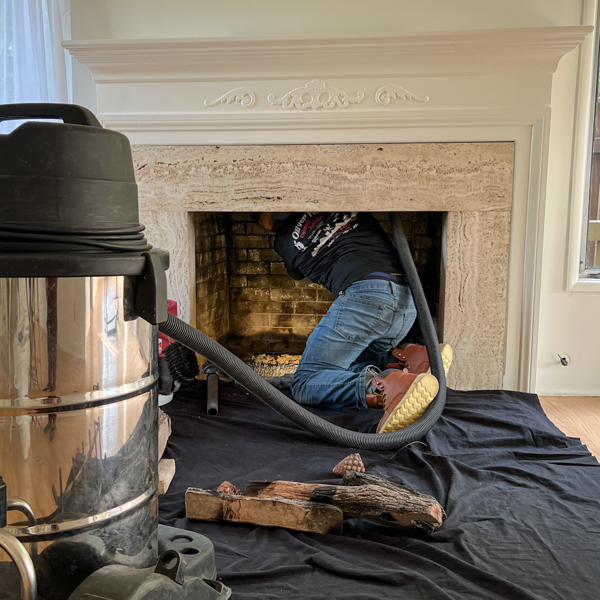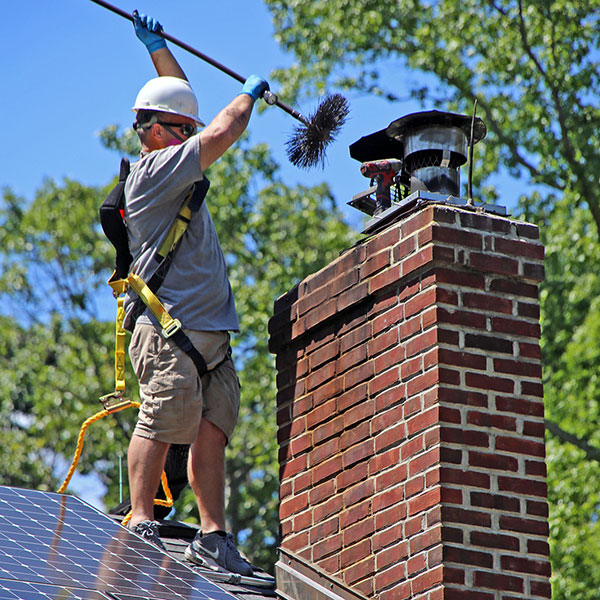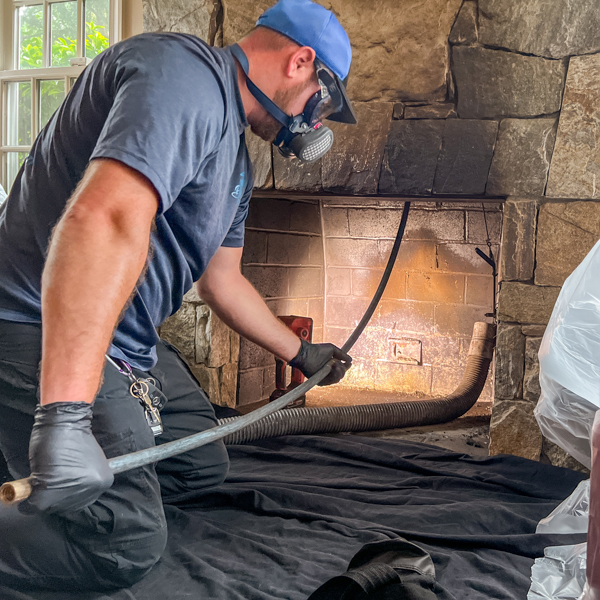Chimney Cleaning San Jose: When and Why You Need Normal Maintenance
Wiki Article
Discovering the Different Types of Chimney Cleansing Techniques: Which One Is Right for You?
Understanding the numerous chimney cleaning methods offered is vital for property owners seeking to keep their heating systems efficiently. From standard hand-operated sweeping that emphasizes workmanship to contemporary techniques such as rotating cleaning and video clip assessments, each approach provides special advantages and factors to consider. Furthermore, using chemical options uses a choice for those handling relentless deposits. As you evaluate these alternatives, it becomes critical to analyze your particular requirements and the condition of your smokeshaft, triggering the inquiry: which method will make sure optimal performance and safety for your home?Standard Smokeshaft Sweeping
Traditional smokeshaft sweeping continues to be a time-honored technique for maintaining tidy and effective flues. This strategy makes use of hands-on tools and strategies that have actually been in method for centuries, emphasizing both craftsmanship and thoroughness. The process typically entails making use of brushes, poles, and other specific tools made to eliminate soot, creosote, and blockages from the chimney's inside.Among the key advantages of typical chimney sweeping is the straight, hands-on nature of the solution, enabling the sweeper to assess the problem of the smokeshaft while cleaning. This method ensures that the entire flue is evaluated for architectural integrity and prospective hazards, such as fractures or clogs created by particles or pet nests.

Rotary Cleaning Strategies
Rotary cleaning techniques represent a modern innovation in smokeshaft maintenance, providing an effective choice to conventional sweeping approaches. These strategies use a mechanical rotary brush, powered by a flexible pole system that can navigate the weave of different smokeshaft flues. This layout allows the brush to effectively scrub the flue walls, eliminating soot, creosote, and other obstructions much more completely than manual techniques.One of the primary benefits of rotating cleansing is its capacity to reach locations that may be difficult for traditional brushes to access, ensuring an extra extensive cleansing process. This method not only conserves time but additionally reduces the physical labor included in chimney maintenance. In addition, it lessens the danger of damaging the chimney structure, as the rotary brush is developed to adapt to various flue shapes and sizes.
Rotating cleansing techniques can be especially beneficial for house owners with heavy soot buildup or those that use their chimneys regularly. While it is vital to employ qualified experts for this service, the efficiency of rotary cleansing makes it a compelling selection for keeping chimney security and effectiveness.
Video Examination Approaches
Developments in modern technology have introduced video clip assessment approaches as a crucial tool for chimney upkeep, allowing professionals to analyze the interior condition of flues with impressive accuracy. This cutting-edge method uses high-resolution cams affixed to adaptable wires, enabling detailed exam of chimney systems without invasive treatments.Video assessment is specifically valuable for recognizing common issues such as creosote buildup, clogs, structural damage, and flue degeneration. The images recorded supplies a clear and thorough depiction of the chimney's interior, allowing service technicians to make informed decisions pertaining to index needed repair work or cleaning approaches.
In addition, the capacity to document searchings for with video recordings acts as a valuable referral for house owners and experts alike. This documents can assist in conversations concerning maintenance requirements and aid in monitoring adjustments gradually.


In addition, video clip inspections can be conducted successfully, usually requiring much less time than traditional examination methods. Because of this, house owners can delight in assurance, knowing their chimneys are being reviewed using cutting edge innovation. Inevitably, video inspection methods are changing smokeshaft upkeep, enhancing click this safety, efficiency, and the efficiency of succeeding cleansing and repair procedures.
Chemical Cleansing Solutions
Chemical cleansing options represent an efficient technique for preserving smokeshaft systems, specifically in dealing with creosote accumulation and soot deposits. chimney cleaning san jose. These options normally contain active components made to damage down these unsafe materials, consequently helping with less complicated removal and advertising a much safer smokeshaft environmentOne of the key advantages of chemical cleaning options is their ease of application. Homeowners can often use them without the need for specific devices or extensive training. Most items are created to be included directly to the fireplace or timber cooktop, where they are stired up, allowing the heat to turn on the chemicals. This process helps to loosen creosote and soot, making it more manageable for subsequent cleaning initiatives.
Nonetheless, it is important to choose the appropriate product, as not all chemical services are created equal. Some might include harsh chemicals that can damage smokeshaft liners or emit unsafe fumes. It is advisable to get in touch with an expert or conduct complete research to choose a solution that is both reliable and secure for your specific smokeshaft type.
Do It Yourself Smokeshaft Cleansing Tips
Preserving a clean smokeshaft is essential for making certain the safety and efficiency of your fireplace, and lots of property owners opt for do it yourself cleansing approaches to tackle this essential job. Prior to starting, gather the essential devices: a chimney brush, expansion rods, a vacuum, and safety equipment such as gloves and goggles.Begin get more by assessing the condition of your smokeshaft; if there are significant obstructions or architectural concerns, take into consideration working with an expert rather. For small residue build-up, attach the chimney brush to the expansion poles and job from the top down, guaranteeing detailed insurance coverage of the flue. Frequently examine for any type of particles that can block air flow.
It's additionally recommended to use a vacuum cleaner to accumulate soot and creosote as you clean. This will certainly reduce mess and lower the inhalation of hazardous bits. After cleaning, inspect the chimney for any kind of cracks or indications of wear and take into consideration applying a smokeshaft cap to avoid future obstructions.
To preserve your chimney's sanitation, establish a routine cleaning routine based upon use; commonly, this would certainly be yearly, or more frequently if you use your fireplace usually. By adhering to these do it yourself ideas, you can make certain a much safer and extra reliable fireplace experience.
Final Thought

Report this wiki page